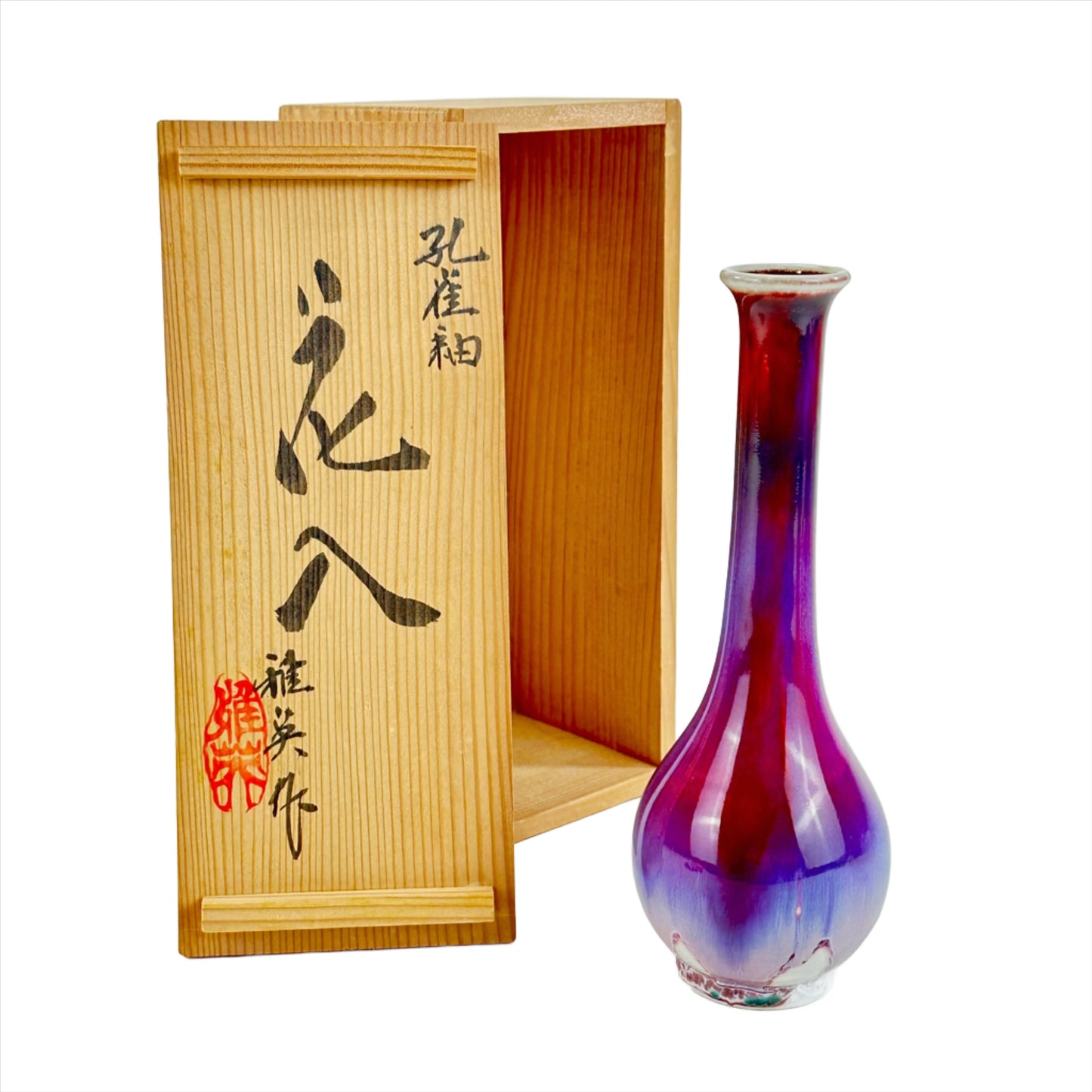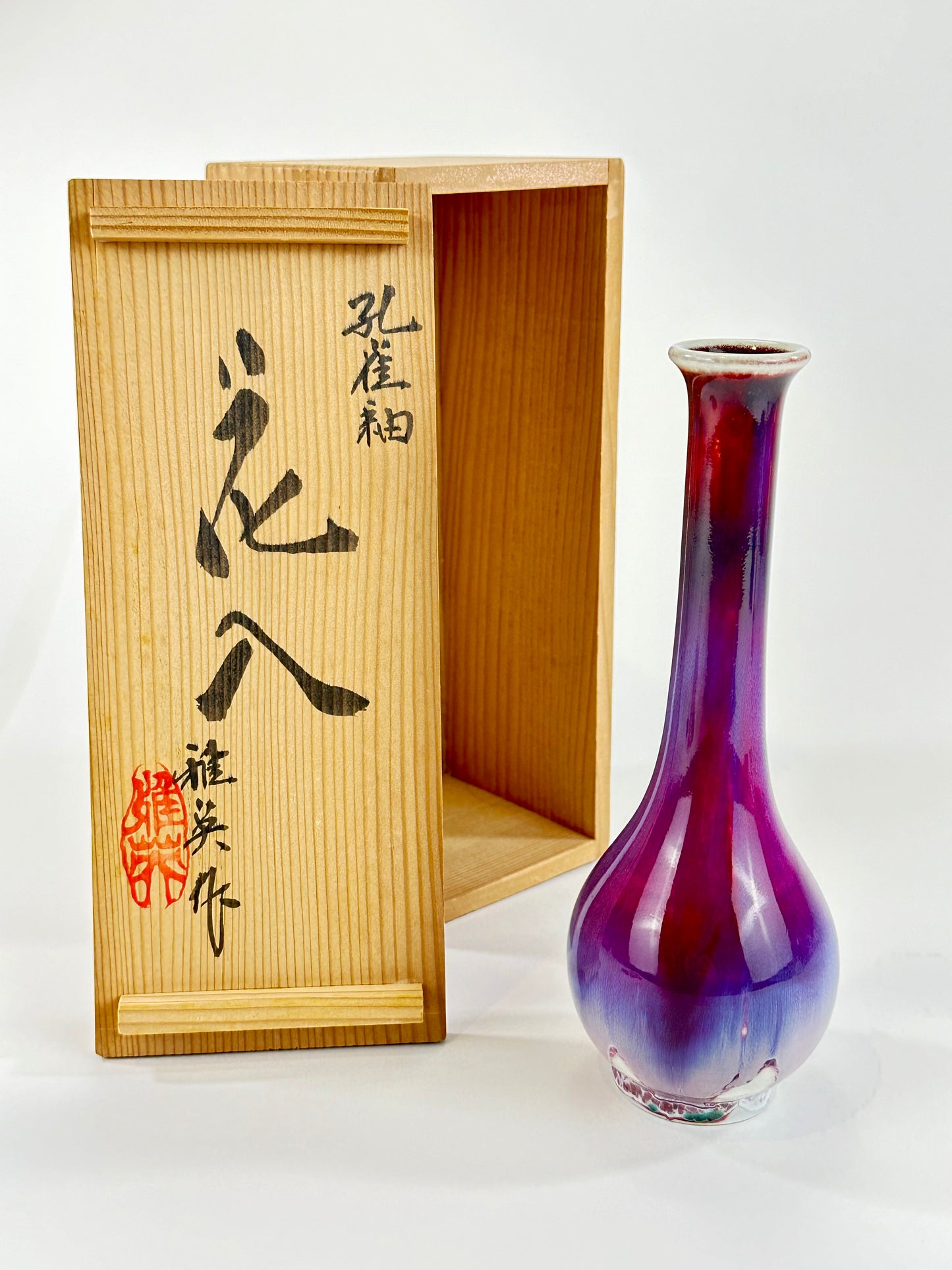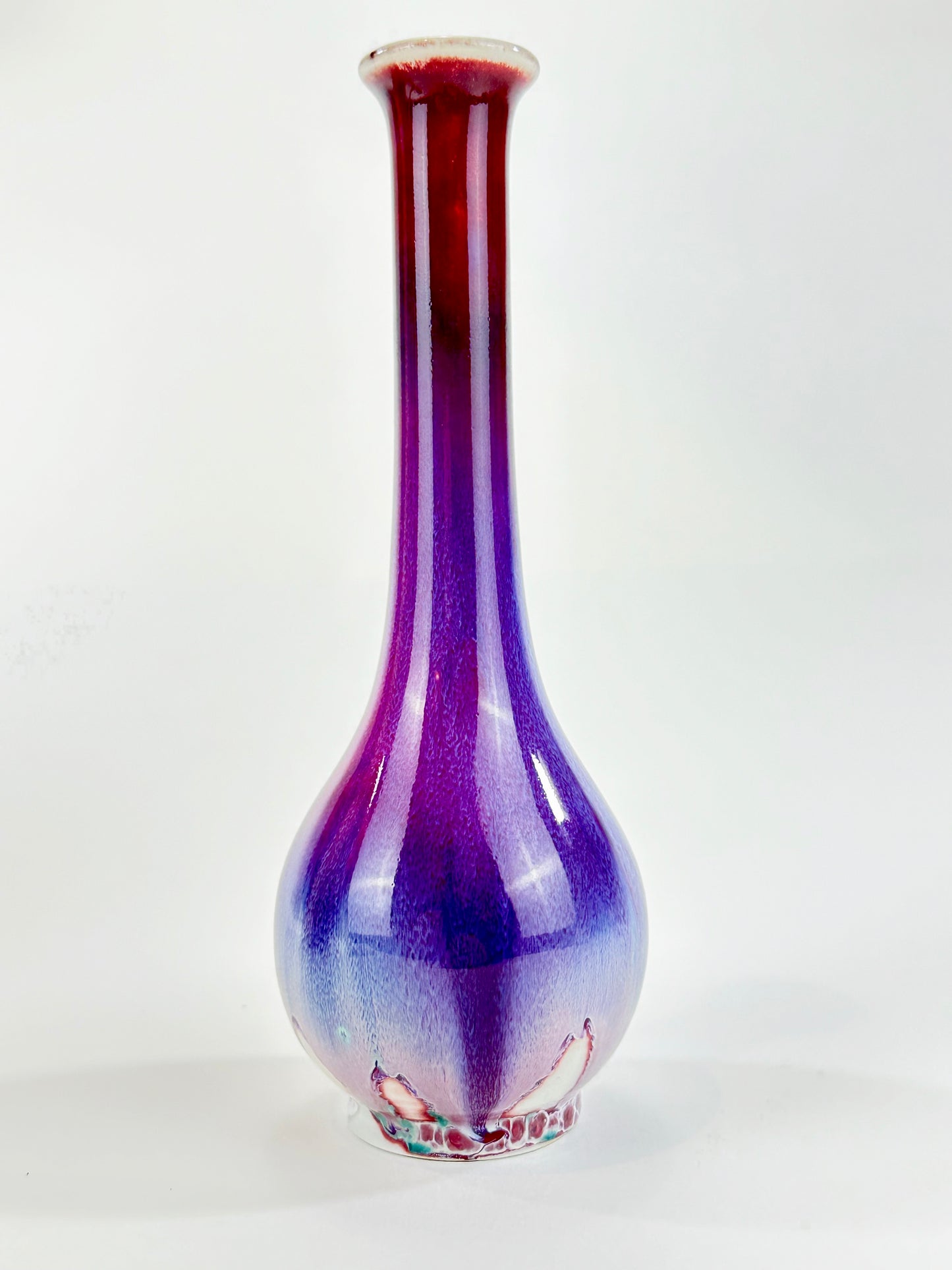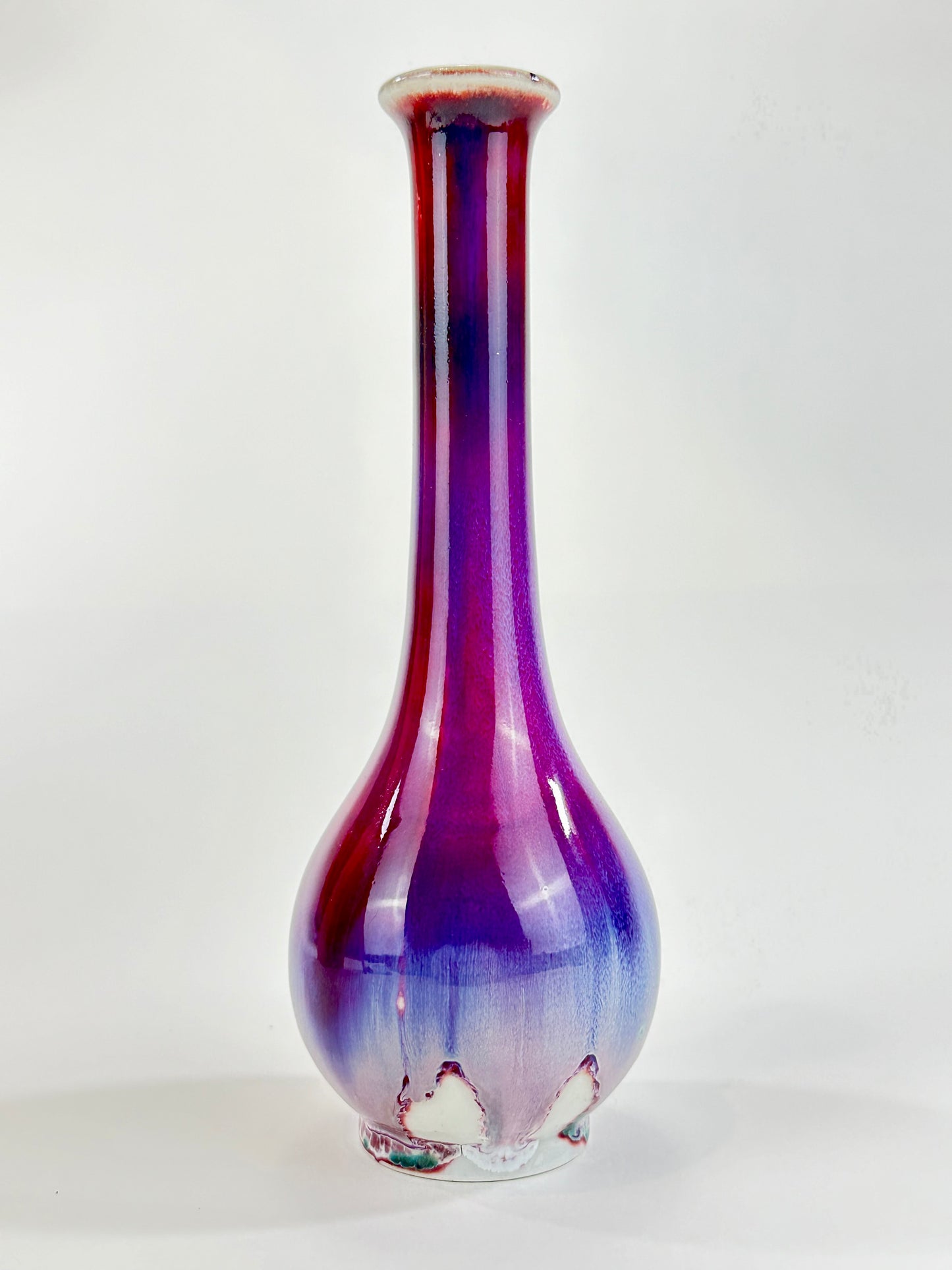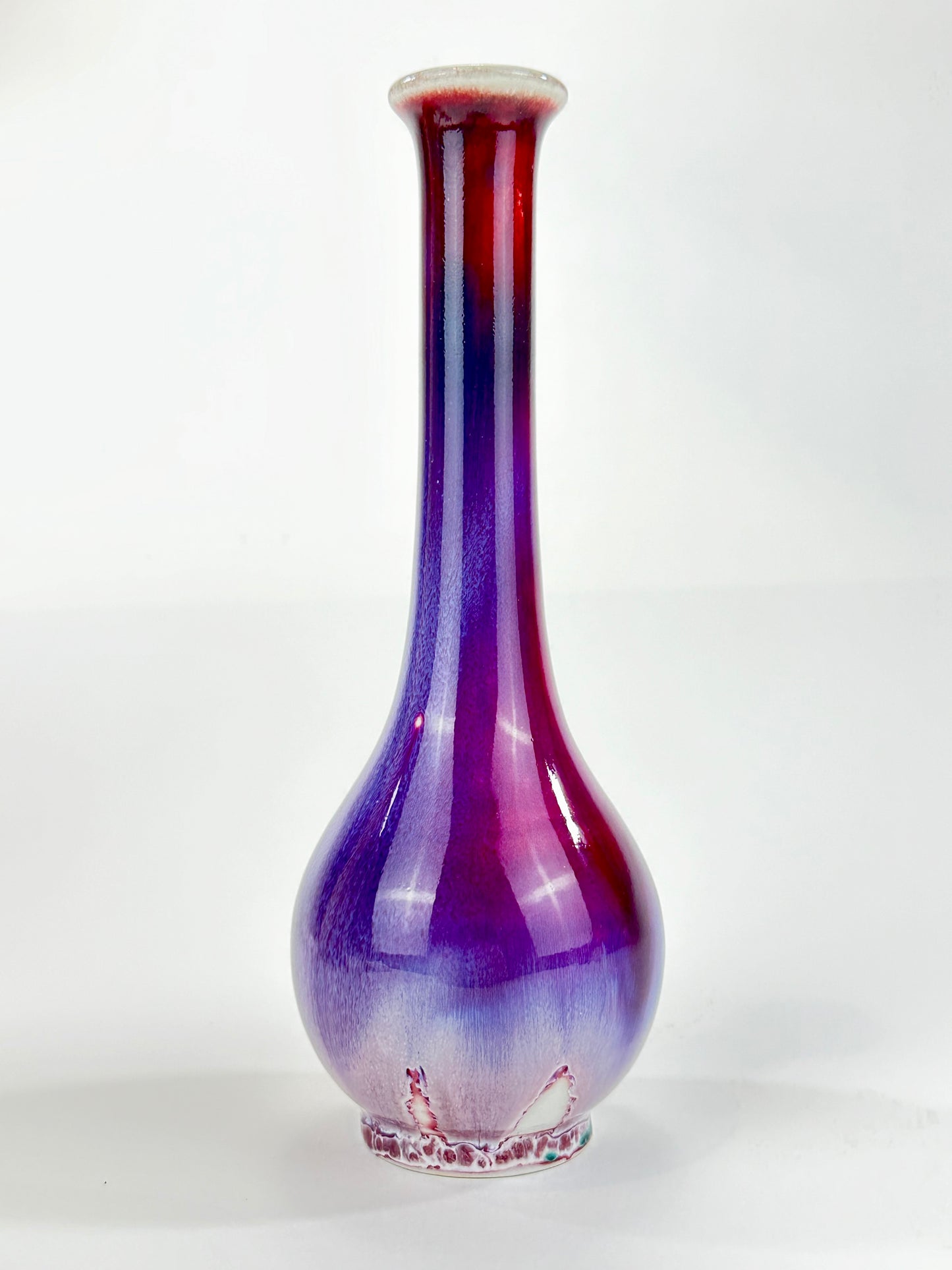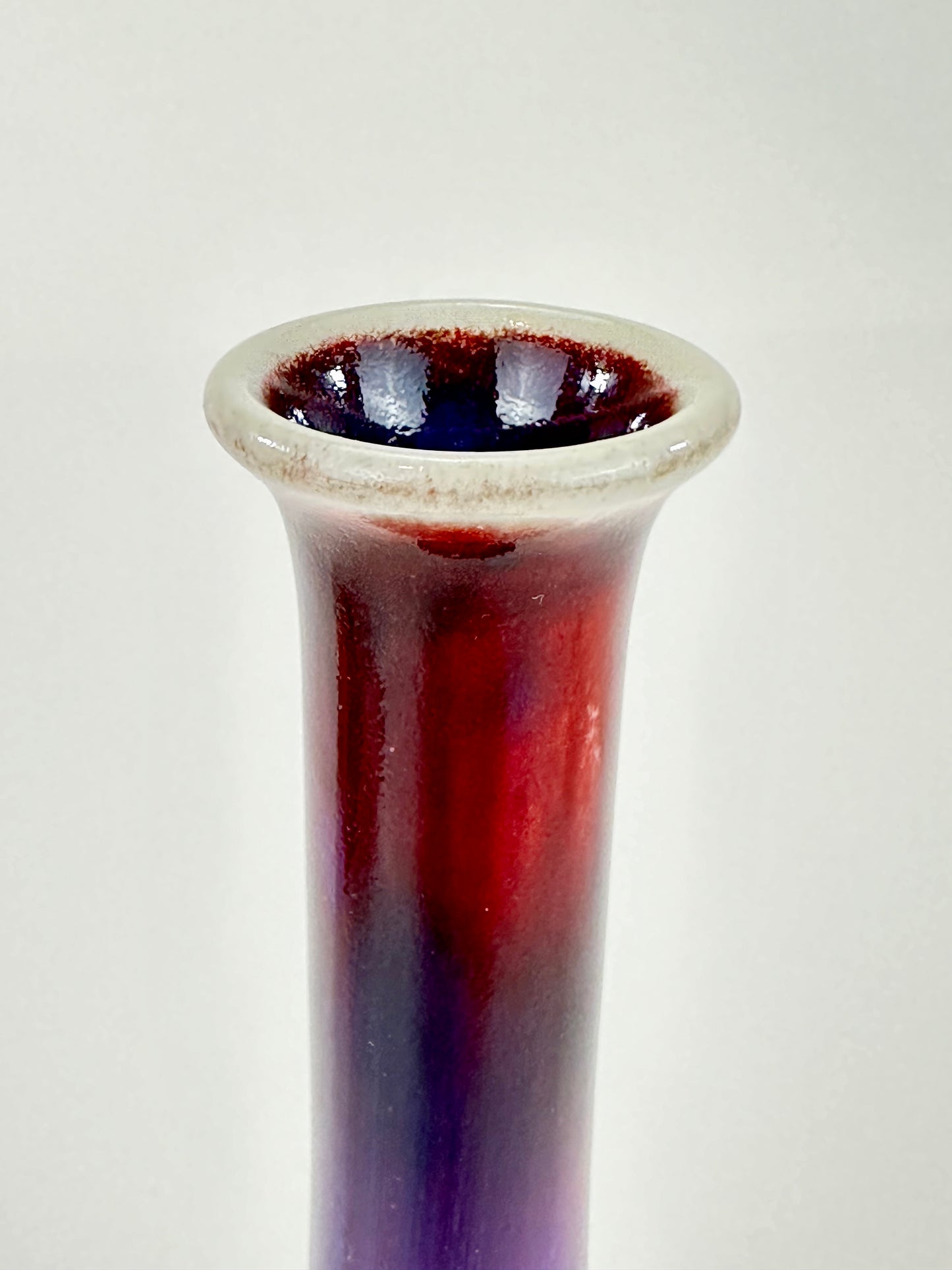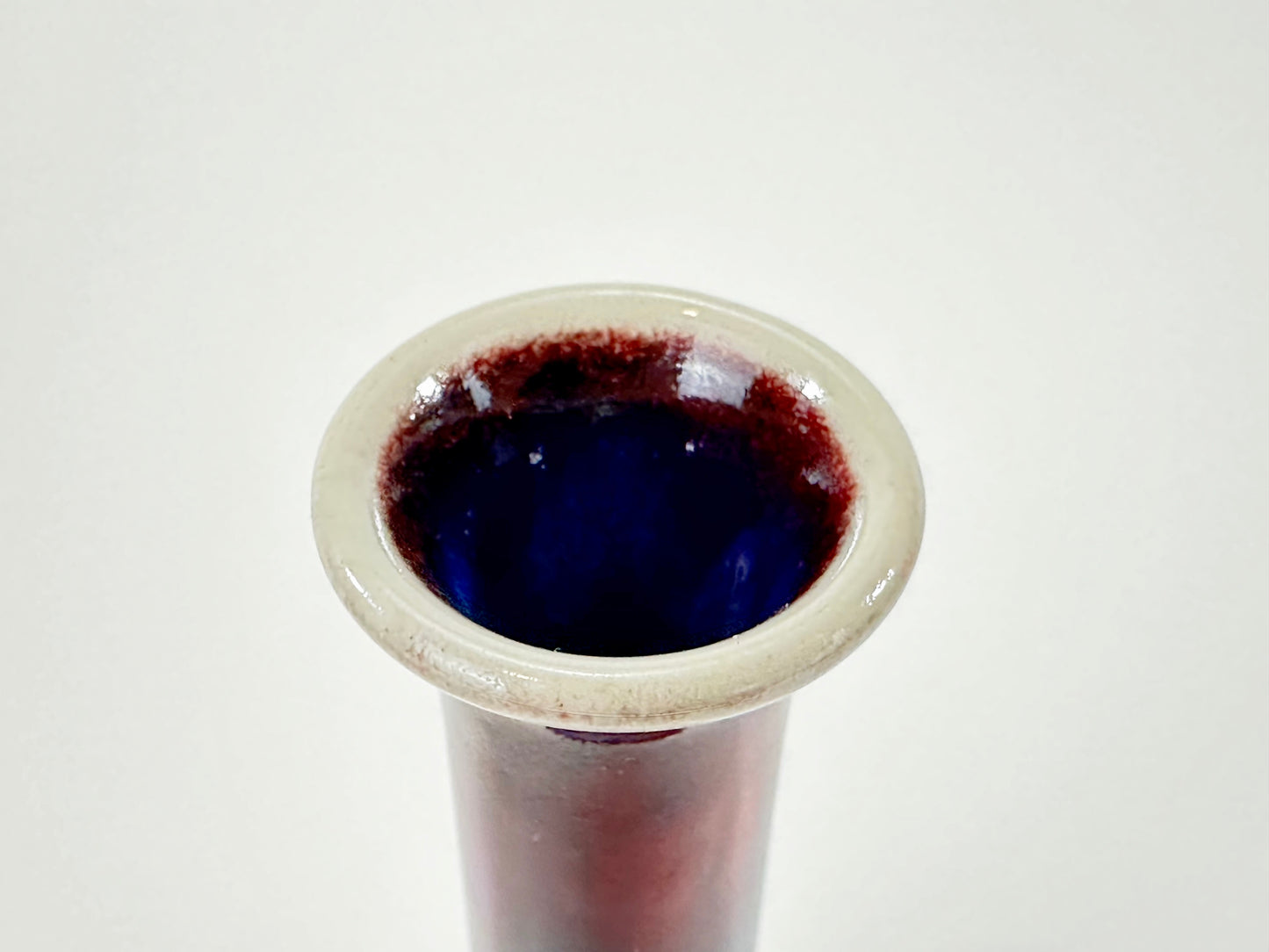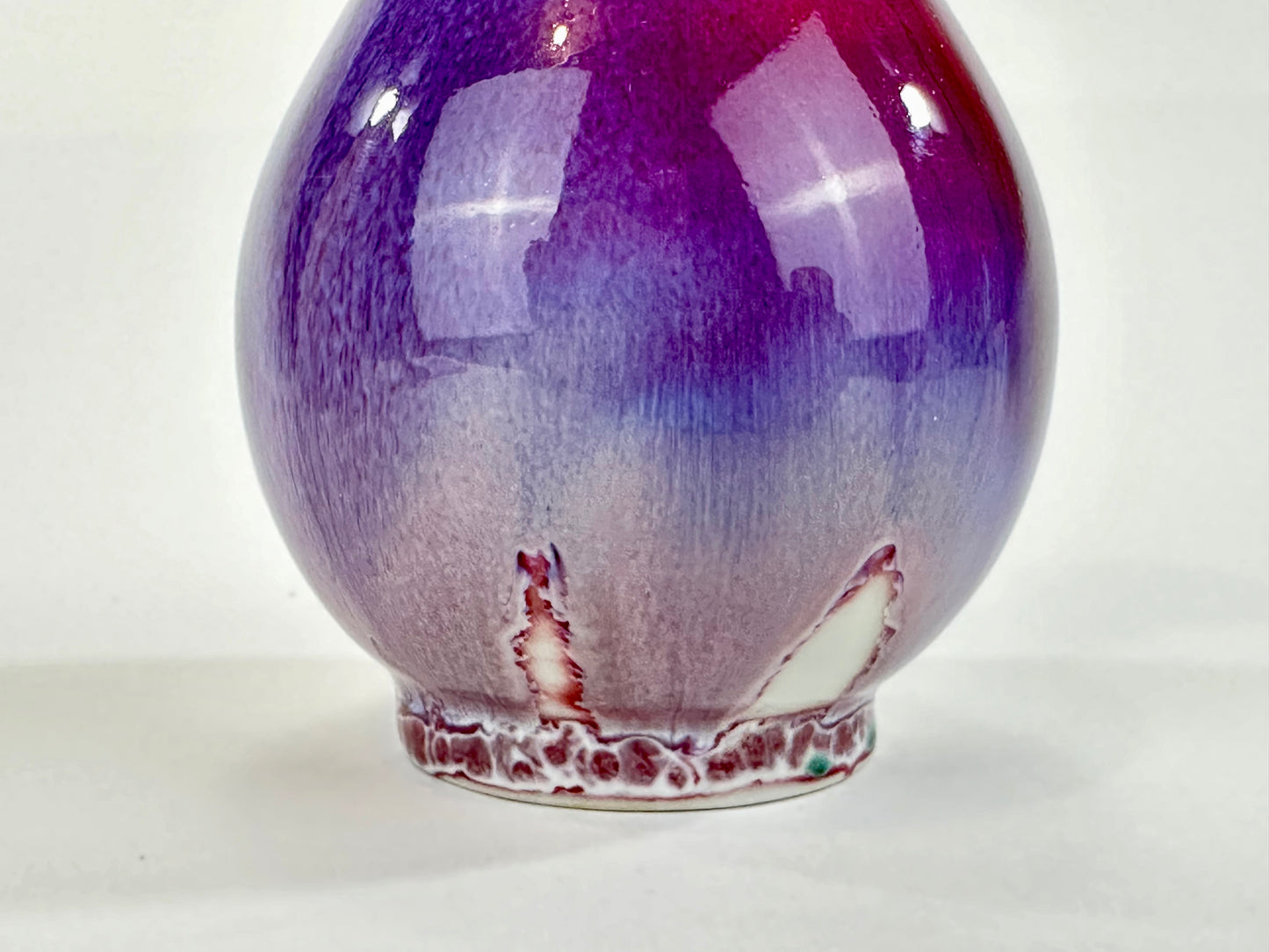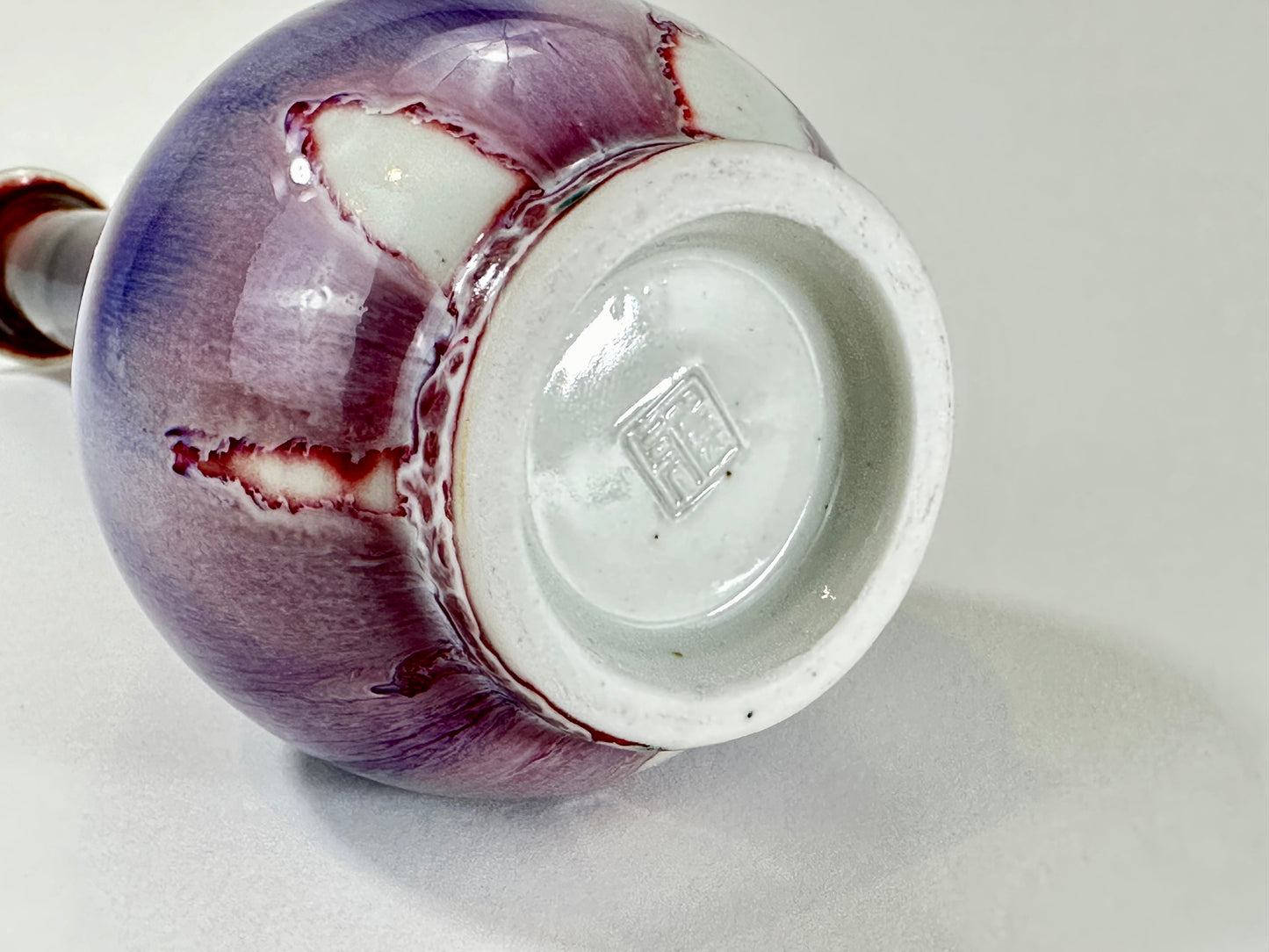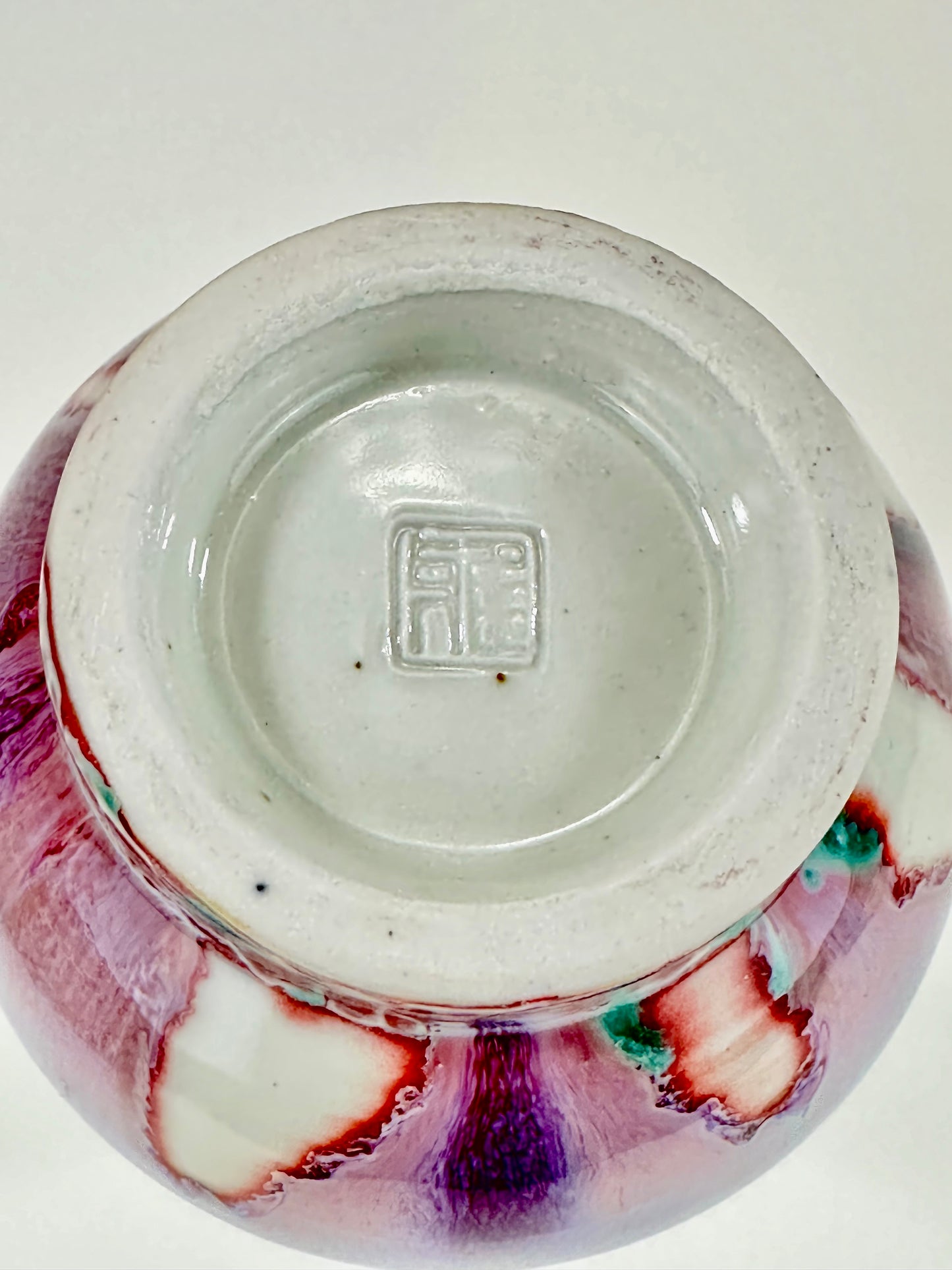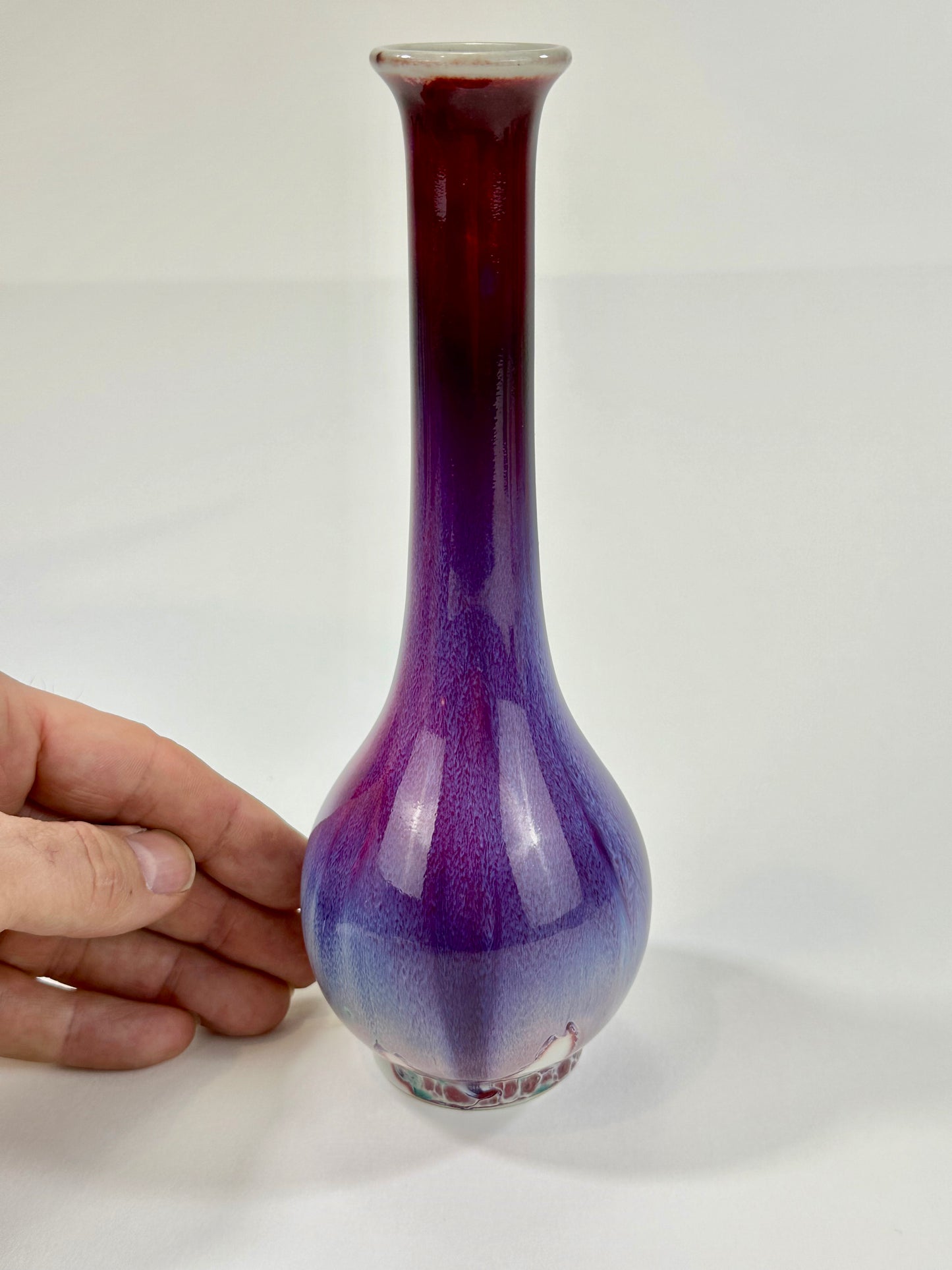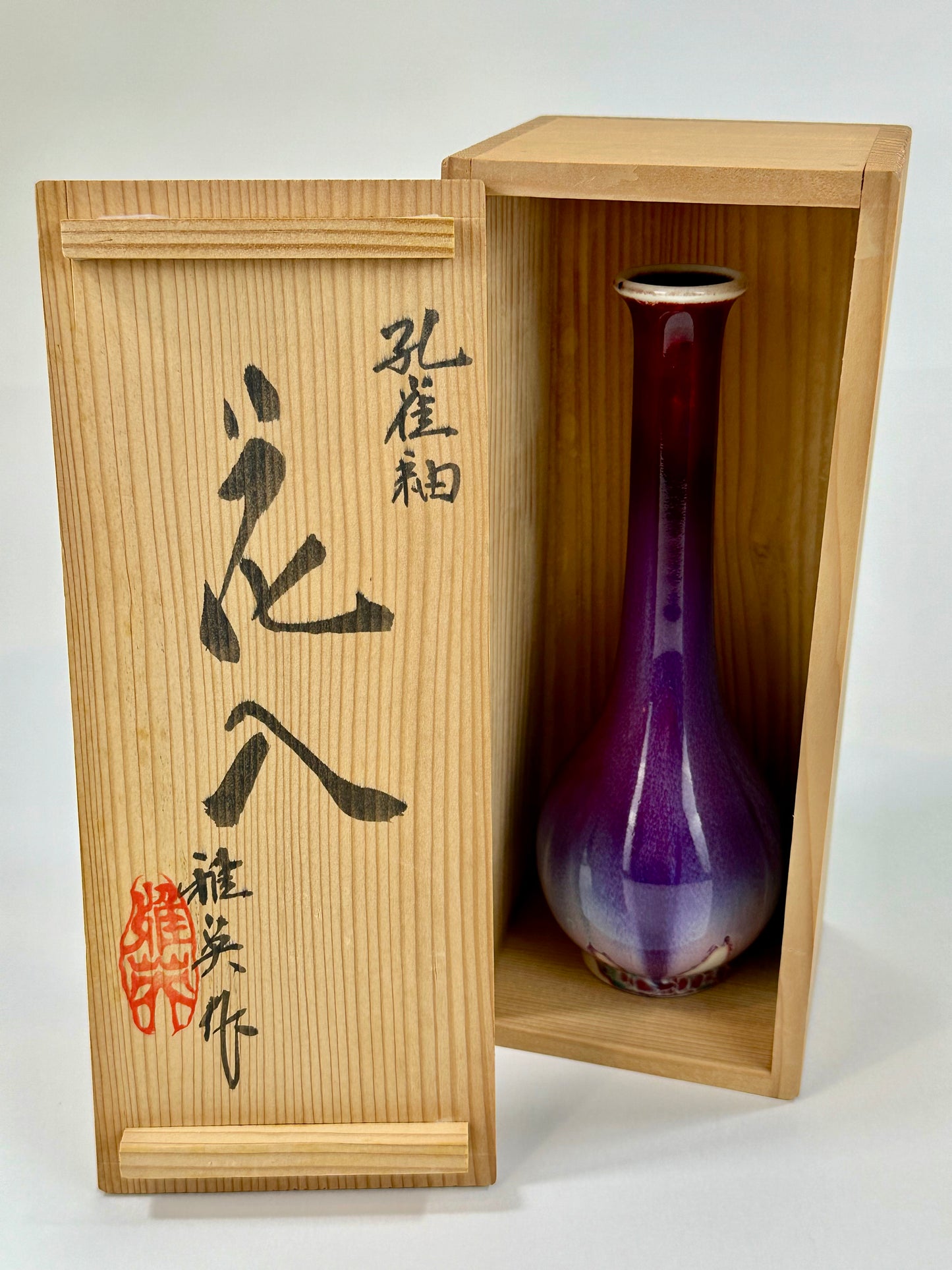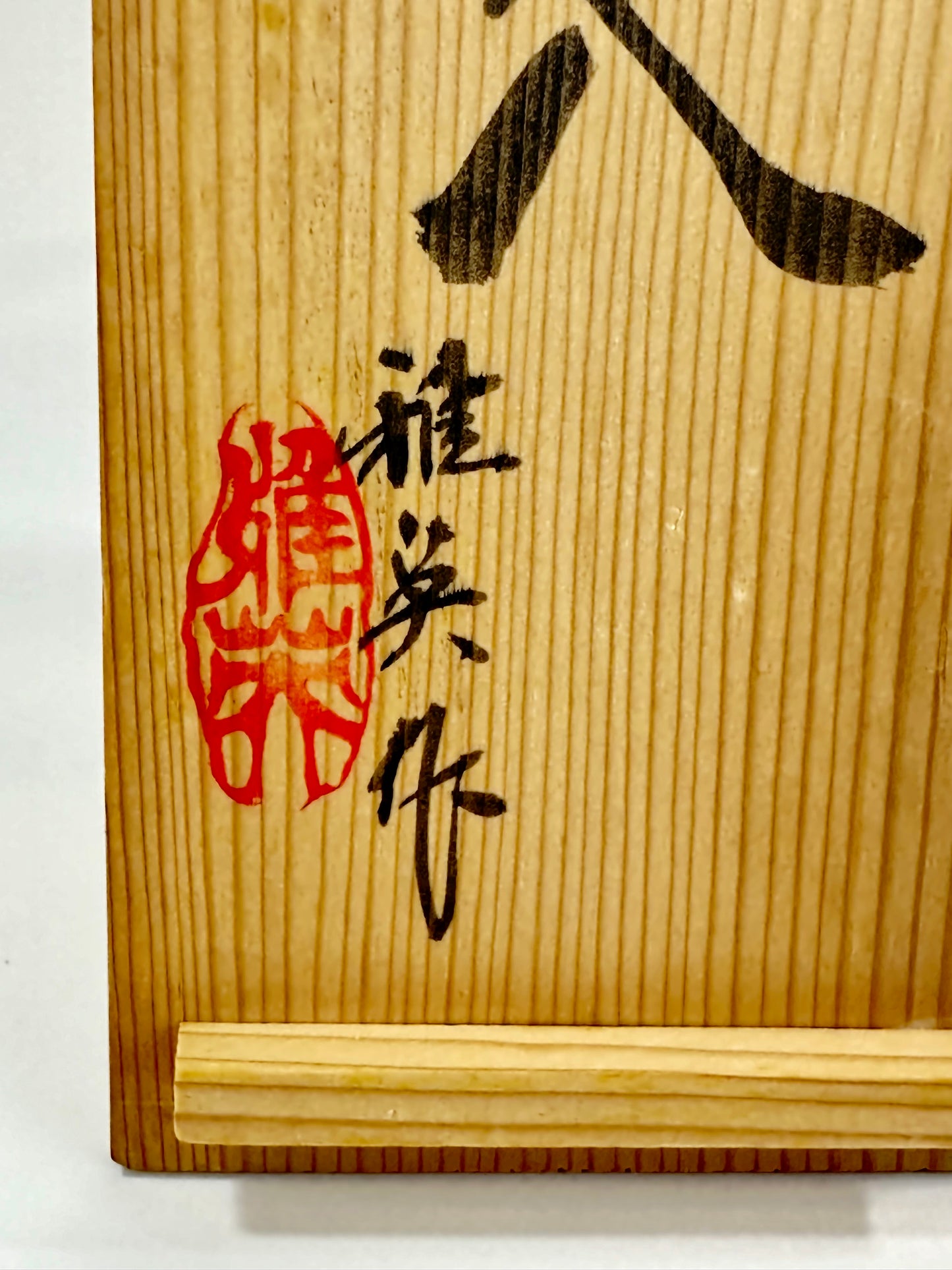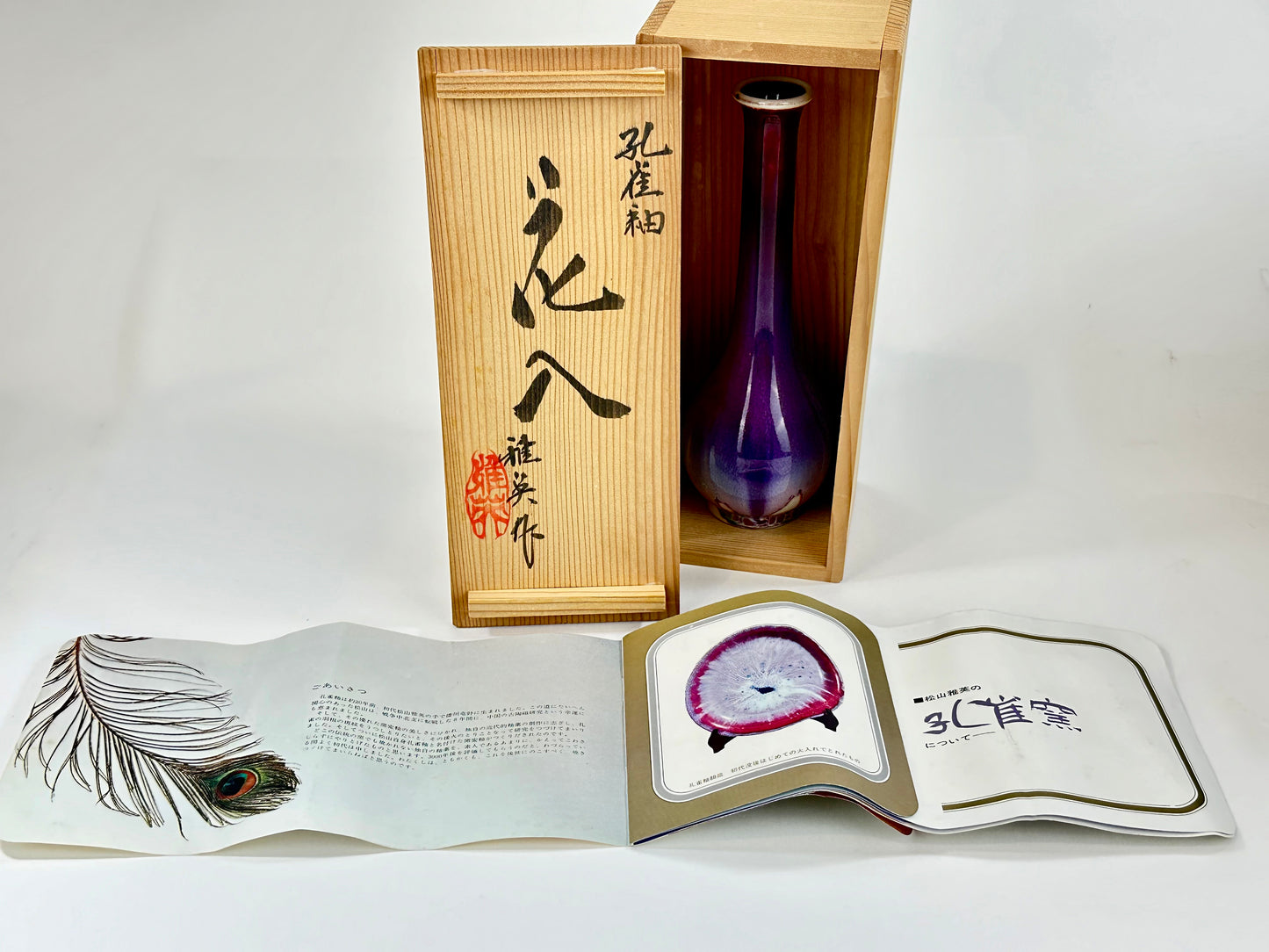Matsuyama Gaei Peacock Glaze Vase Japanese Hand Thrown w/ Box 8"
Matsuyama Gaei Peacock Glaze Vase Japanese Hand Thrown w/ Box 8"
Couldn't load pickup availability
This truly rare beauty was made in the highly renowned Matsuyama Gaei kilns during the mid to late showa era. It will add a touch of elegance to your space with this 7” tall Japanese ceramic vase in mesmerizing teal and lavender drip glaze over a pale gray base. Its 1” mouth allows for precise floral arrangements, making it a perfect centerpiece for any room.
Though relatively contemporary, this is a piece of art that equals the creations of previous centuries in collectibility, craftsmanship and value - historic, cultural and monetary.
Presentation box markings: 花入 "Flower Vase" 雅英作 "Made by Gaie" 孔雀釉 "Peacock Glaze"
Artist's mark "雅" on bottom
Height = 8"
Diameter = 2.75"
Matsuyama Gaei 1st 初代 松山雅英 (1916-1963)
After the outbreak of the Sino-Japanese War (1931-1945), the 1st generation Matsuyama Gaei went to mainland China as consul, where he was awed by the pottery he saw and took up studying the craft. In 1947, Matsuyama returned to Japan, where he built a kiln in Tsutano, Hyogo Prefecture. Under the guidance of Kiyomizu Rokube from Kyoto, Matsuyama began his rise as a pottery craftsman.
They moved the kiln to Kamikajo Town in 1950, where he completed his yohen tenmoku (天目) glaze the following year and produced his kujaku Peacock glaze pottery all inspired by the Song Dynasty Jian glazing techniques from the 1100's.
In 1963, the first generation Gaei Matsuyama became ill and instructed his wife Tsutako in the art of Yohen Kujaku Tenmoku (copper transmutation glaze) before passing away.
In the following year, Tsutako inherited the name of the 2nd generation Gaei Matsuyama and continued producing pottery including pieces that were collected by the Imperial Prince. She had many of her works displayed as personal exhibitions at art museums in France.
Tsutako’s oldest daughter, Kazuko, was the successor of the 3rd generation Matsuyama Gaei and continues to produce pottery. Unfortunately, the kujaku furnace is expected to finally retire in the third generation.
